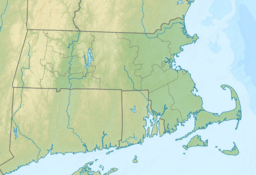Telegraph Hill (Provincetown, Massachusetts) facts for kids
Quick facts for kids Snake Hills |
|
|---|---|
| Highest point | |
| Elevation | 52 ft (16 m) |
| Geography | |
| Location | Cape Cod, Massachusetts |
| Topo map | USGS Provincetown |
Snake Hills is a small natural rise located in Barnstable County, Massachusetts. It is found on the famous Cape Cod peninsula. Even though it's called "Hills," it's more like a gentle rise or dune.
This spot is about 1.6 miles (or 2.6 kilometers) west-northwest of the village of Provincetown. It sits within the larger Town of Provincetown. Another nearby feature is Oak Head, which is located to the east-northeast of Snake Hills.
Contents
What Are Snake Hills?
Snake Hills is a very low elevation point. It only reaches about 52 feet (or 16 meters) above sea level. To give you an idea, that's roughly the height of a five-story building. Because of its small size and location on Cape Cod, it's often considered a hill or a dune. It's not a tall, rocky mountain like you might find in other parts of the world.
Where Can You Find Snake Hills?
Snake Hills is part of the unique landscape of Cape Cod. This area is known for its sandy beaches, dunes, and coastal forests. It's a popular spot for tourists and nature lovers. The hills are located near the very tip of the Cape. This makes them part of a beautiful and historic region in Massachusetts.
Why Is It Called Snake Hills?
The name "Snake Hills" might sound a bit mysterious. Often, places get their names from local wildlife or their shape. It's possible that snakes were once common in the area. Or perhaps the winding shape of the hills reminded early settlers of a snake. Many small hills or rises across the United States share similar names. This is a common way to describe their appearance or what lives there.
Nature Around Snake Hills
The area around Snake Hills is part of the Cape Cod National Seashore. This means it's a protected natural space. The landscape here is shaped by the ocean and wind. You can find sandy dunes, beach grass, and hardy plants. These plants help to keep the sand from blowing away.
Local Wildlife
Even though it's called Snake Hills, you might not see many snakes! However, the area is home to various animals. You could spot different types of birds, especially seabirds. Small mammals also live among the dunes and grasses. The protected environment helps these creatures thrive. It's a great place for nature observation.
Protecting the Environment
Because Snake Hills is part of a national seashore, it's important to protect it. Visitors are encouraged to stay on marked paths. This helps to prevent damage to the fragile dune system. Protecting these natural areas ensures they remain beautiful for everyone. It also helps the plants and animals that call them home.



